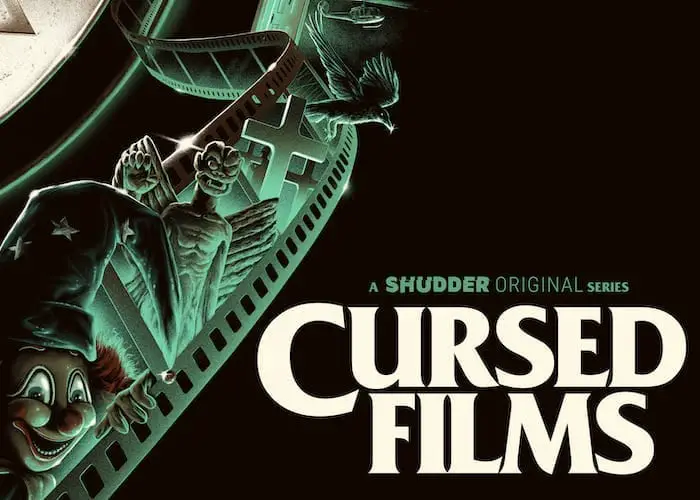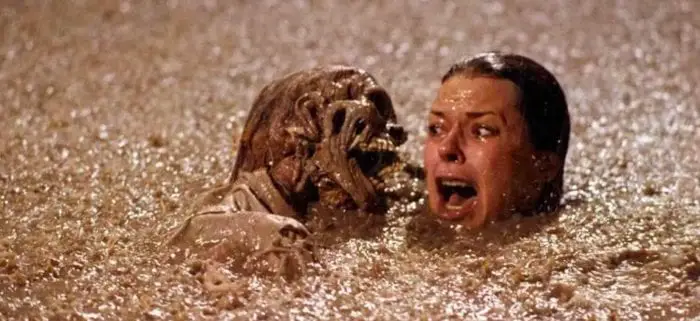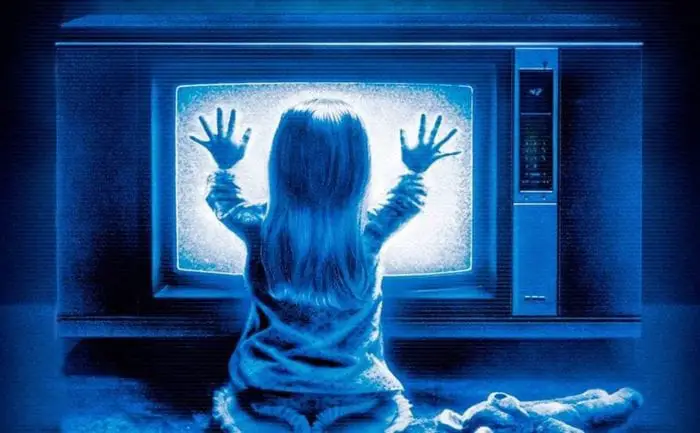Shudder’s newest original series, Cursed Films, tells the story of horror films that are famous for more than just their plot. The films featured throughout the series all have a deep mythology attached to them surrounding their production and the potentially haunted, or cursed, nature of creating horror. Even if you think you know the stories behind these cursed films, the series is still worth a watch. It delves deeper into the societal and psychological reasons that we become obsessed with these stories and leaves viewers with many thoughts to ruminate over.
The second episode of the series shines a spotlight on Poltergeist, one of the most well-known cursed films in the horror community and beyond. It features a compelling cast of interview subjects, including the film’s VFX artist Craig Reardon, Fangoria’s Phil Noble Jr. and film critic April Wolfe, who all engage in conversations about Poltergeist’s obsessive fandom and its tragic history.

Anyone who is a fan of horror films knows the curse of Poltergeist. A significant number of people involved with the film either became ill or died during production or shortly after the film’s release. The film and the franchise as a whole are said to be cursed due to the use of real human skeletons, allegedly stolen from India and brought to the US. These skeletons, used in the film’s famous finale pool scene, are said to be charged with an evil, demonic energy from their past owners whose angry spirits curse those who cross their paths. As noted in the episode, the mythos surrounding Poltergeist is considered a type of meta-curse, where the curse associated with the creation of the film mirrors the curse that we see on screen.
After laying out the basics of what the curse is and where it is believed to come from, the episode takes an interesting and slightly comedic turn as it shifts its focus to how cursed objects become sights of obsessive focus for fans of horror films. We meet a horror prop collector who, among many other screen-used horror film items, proudly displays the Poltergeist clown in a glass case on his wall. We then follow the collector to the Poltergeist house, which is occupied by the same man who owned it during the filming of the movie and whose quiet suburban home has been a popular tourist site for horror fans for over 20 years. These fans stop in front of the home for photo ops at all hours of the day and even sometimes go as far as talking to the neighbors to try and learn more about the house and its occupants.

There are some really interesting observations to go along with this segment of the episode, all about how many horror fans seek to confront or even own the objects that scare them as a form of therapy. Although it may seem like a frivolous or silly hobby to some, this magical belief in the supernatural possibilities within objects helps certain people to cope with the mundaneness of everyday life. I found this segment endlessly interesting and almost ironic in a sense, with the dichotomy between wanting to own or to be in the presence of cursed objects but failing to be cursed by them yourself. Objects like the Poltergeist house and the clown are famous and sought after because they are believed to be highly cursed and dangerous, yet those who live with or within these objects continue to live out their lives in peace and safety, therefore putting the validity of the curse itself into question.
Unfortunately, peace and safety is not something that was granted to everyone who has come into contact with this film and its production, and it is these two stories that carry the cursed history of Poltergeist to this day. Dominique Dunne and Heather O’Rourke are two actresses from the Poltergeist franchise who suffered tragic deaths. Dunne’s story is one that many horror fans and true crime enthusiasts know well, as she was brutally strangled by her abusive ex-boyfriend John Sweeney and later died in the hospital from her wounds. Sweeney, who was taken to trial, was acquitted of second-degree murder and given unexplainable leniency from the trial judge, leaving Dunne to receive no posthumous justice for the multitudinous suffering she had to endure at the hands of her domestic abuser.
Heather’s story is just as difficult and tragic. She was only 12 years old when she passed away from an undiagnosed intestinal obstruction. When she died, Heather was nearing the end of filming the third Poltergeist film with director Gary Sherman, who provides a sobering account of what happened after her death in this Cursed Films episode. Sherman recalls how he and his team did not feel comfortable finishing or releasing the movie after Heather’s death but were forced to do so both by studio execs. His portions of the episode are incredibly moving as he details his relationship with Heather and his memories of working with her on the set. The curse of Poltergeist, for Sherman, is a perverse story that did nothing but capitalize, exploit, and extend the grief and trauma of Heather’s death. Sherman was so frequently hounded by the tabloids after Heather passed away that he had to change his number and move in order to escape them.

In this episode, film critic and writer April Wolfe remarks that sometimes it is easier to try and explain away death using curses and the supernatural than to come face-to-face with our own mortality—that it is sobering to realize anyone we love can leave us at any time, a thought difficult to wrap our heads around. I think many of us, now more than ever, are becoming aware of the fragility of life and how quickly our own health, or the health of those we love, can be in jeopardy. But, much like we are being advised to do in these trying times, this episode of Cursed Films implores us to remember the people within the narrative. These are actual, real human beings who tragically lost their lives and whose families now have to go on without the people they love.
Human life is complicated and sometimes hard to understand, but to always err on the side of superstition, curses, or the supernatural runs the risk of masking the weight of these losses and not allowing for people to be respectfully mourned or remembered. Although it may be fun, at times, to wrap ourselves up in haunted stories, the second episode of Cursed Films asks us to stay grounded and to leave the storytelling for the screen.



